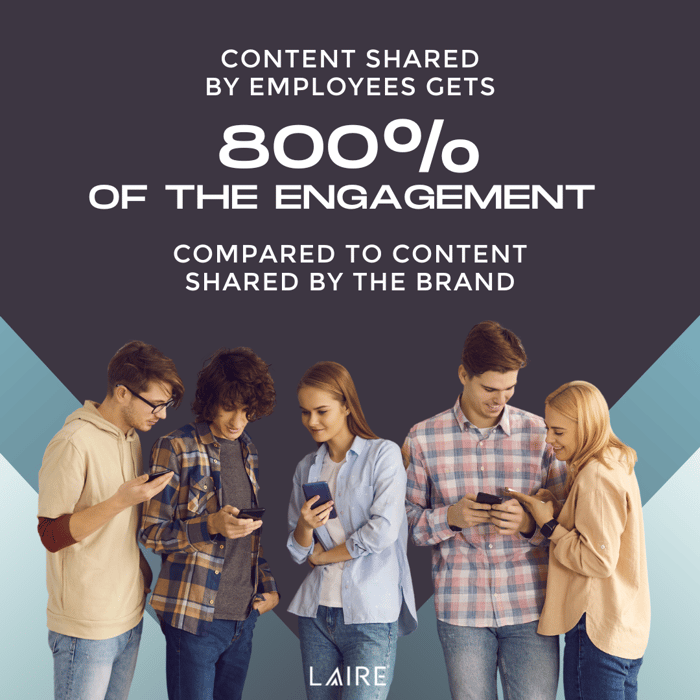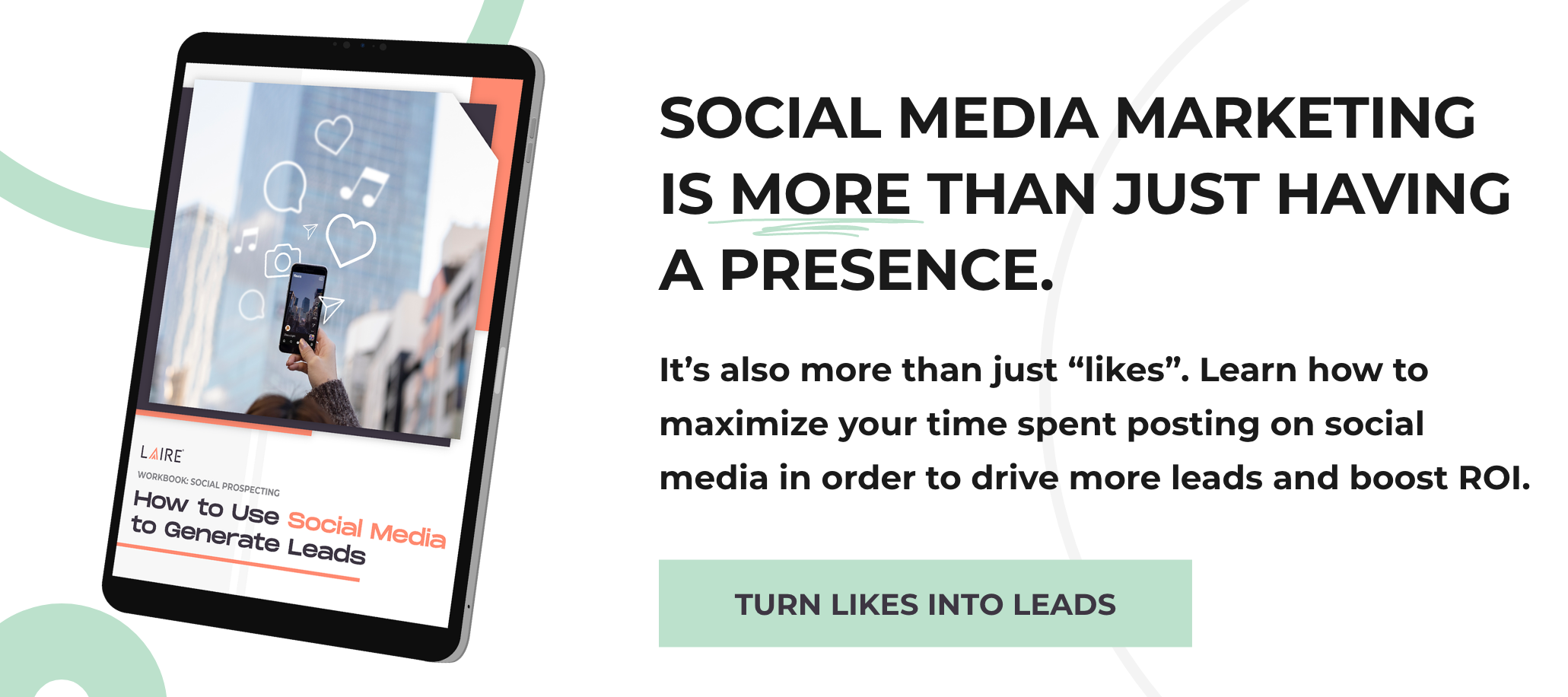What if we told you that just one business strategy could nearly double your brand’s visibility on social media? It can also boost inbound traffic by almost 50%, shorten the sales cycle, and increase your conversion rate, all with less marketing spend.
The strategy in question: employee activation. And it involves building a work environment where employees feel empowered to share information on social media about their roles at your company.
What Is Employee Activation?
Also called employee advocacy, employee activation is a formal, organized business program designed to encourage a brand's employees to engage with and create content showcasing their knowledge, expertise, and passion for the brand and its customers.
Successful employee advocacy programs include developing a plan, setting goals, measuring outcomes, and adapting techniques to enhance results. Despite the fairly systematic approach, however, there are several misconceptions about what it means to activate employees.
Employee Activation Is NOT…
Activating employees is not having employees blast out "company-approved" branded messages or share a certain number of posts on their personal accounts each week. It's not telling employees "they're not a good culture fit" because they aren't active on company social media.
Activation efforts can't feel disingenuous or solely benefit the company. This will mostly generate forced, inauthentic posts that no one wants to read — and your customers will see right through that.
Social activation of employees is also not a free-for-all. You'll want to establish a code of conduct, while still encouraging employees to express themselves authentically. For example: Are TikToks on the job a fireable offense or welcomed free publicity? That primarily comes down to your company’s goals, guidelines, and relationship with social media.
Why Is Employee Advocacy Important?
With paid ads getting more expensive each year and posts from your company profile getting buried by the algorithm, many struggle to make social media work for their business. Employee engagement and advocacy on social media breathe life into your profile, showing prospects and potential new hires why they should work with or for your organization.
Don’t believe us? The following statistics speak for themselves:

- 76% of people trust a brand more when "normal" people share its content. That includes employees who don't appear to be acting directly on behalf of the brand.
- 84% of people are likely to trust people they know at a company versus only 15% who trust the brand itself. When you're doing social media right, customers should feel like they know your people, not just your brand.
- Content shared by employees gets 800% of the engagement compared to content shared by the brand.
- Sales reps who leverage social media in their selling outperform 78% of their peers when all else is equal.
- Socially engaged employees tend to stay with their company and feel more optimistic about the brand's direction, leadership, and products and services.
- A Workplace Research Foundation study found that for every 10% investment increase in employee engagement, brands generated a $2,400 profit increase per employee, per year.
Those last stats bring up an important question: What is the difference between employee engagement and employee activation or advocacy?
Employee Engagement vs. Employee Activation
Employee activation is a very targeted type of employee engagement. Activation doesn't treat engagement as the product of rewarding employee behaviors with trivial incentives. Instead, it seeks to generate a desire within employees to share.
Employee activation recognizes the value of individual contributions and encourages employees to share their expertise and passion for what they do on social media. This, in turn, reflects the caliber of people working for the brand and the level of customer service customers can expect from the brand.
It's no secret that employees invested in their job and the company perform better, are more attentive, and take personal responsibility for customer experiences. This is what employees can showcase when you have an activated workforce.
8 Best Practices for Building an Activated Employee Program
1. Set Activation Goals
What do you want to achieve? Look at both short-term and long-term goals.
In the short term, recruiting and retaining top talent is essential, so set an employee retention goal. Compliment this with a marketing goal in both the short and long term. For example, a short-term marketing goal could be generating a certain number of leads attributable to employee activity, increasing social media followers, or getting more traffic to key pages on the website.
Other goals to consider include:
- Customer retention
- Customer annual value or lifetime value
- Upselling numbers
- Revenue growth
No matter the specifics of your goals, make sure they’re SMART — specific, measurable, attainable, relevant, and time-bound.
2. Make the Real Incentive Clear
The incentive you offer employees for sharing your brand on social media shouldn’t just feel like compensation for a service but should align with what they actually want.
When you activate employees, you’re giving them the opportunity to build a professional brand with your company as the backdrop. This brand, which will remain even if they decide to leave your company, is their expertise, their work, and their experience. They own it. And because they feel this sense of ownership, they have a vested interest in growing it.
When you consider that one in 4 members of Gen Z name "influencer" as their dream job, and roughly half of Gen Z and Millennials want to make a difference in the lives of others through what they share on social media, the incentive is aligned with why and how most employees use social media.
What’s more, customers use social media in the same way. A study published in Harvard Business Review found that 24% of people post on social media primarily to get noticed by sharing inside knowledge with others. Another 20% said that sharing helpful posts on social media shows they care.
3. Build a Culture of Accountability and Trust
Many things brands try to do to build a positive culture seem inauthentic at best. Not to mention, perceptions are hard to shake once established.
Your organization’s leaders may say they want a culture of accountability and trust, but those words mean nothing without actions to back them up. To actually build this type of positive culture, you need a work environment that:
- Encourages team members to give 100%, be creative, speak up, and challenge the status quo (of both the organization and themselves)
- Establishes clear expectations and a means by which every employee can personally measure whether they're meeting those expectations
- Breaks down silos so that employees not only see the contributions of others, but they also more clearly understand how their actions contribute to meeting business goals
- Nurtures leaders who understand their role of empowering others to do their best and the importance of a feedback loop where they listen as much as they talk
Another way to build this culture is by showcasing your brand in a new light as a socially responsible brand that's giving back to society. This can activate a sense of purpose in employees’ social media activities.
4. Invest in Your Employees
Invest in the people you want to be invested in your brand enough to turn them into advocates.
One way to show employees you value their time and talent is to ensure they have the technology needed to perform at their best. For example:
- Customer relationship management (CRM) technology reduces double work and frustration when the right-hand doesn't know what the left is doing or, worse, thinks they're working toward different goals. A CRM also helps customer-facing employees deliver a consistent customer experience.
- Collaboration technology reduces bottlenecks, overwork, and miscommunication in the workflow while keeping projects on track and on time.
- Automation technology removes tedious, mind-numbing, and repetitive activities, so employees feel accomplished, have the mental capacity for creative thought, and can see the results of their work regularly.
5. Identify Your Current Brand Advocates
As many as 50% of employees have shared something about their company on social media. This means that if you've already started developing a culture of trust and accountability, you may have some activated employees off the bat.
These advocates can serve as examples to the rest of your team. To recognize them and gain valuable knowledge you can use to build your activation plan, either observe or ask them directly to find out:
- What motivated an employee to share a particular post on social media?
- What are they getting out of it?
- What kinds of posts resonate with their audiences?
Use what you learn to replicate their success, but be sure to acknowledge where those insights came from. Doing so will help create a leadership structure that rewards the greatest advocates with top positions within the program. Those who are doing less will still have a place within your leadership structure but might play a more supportive role.
6. Don't Forget to Update Your Social Media Policy
If you’re following these best practices, you’re well on your way to increasing employee activation. But can your current social media policy handle it? Or is the language too restrictive to allow professional brands to blossom?
It may be time to create a new policy. And if your old policy was restrictive, own it and announce that your organization is ready to embrace social media. Most importantly, make sure this new policy is easily accessible for those who want to review it before hitting “post.”
7. Communicate Your New Take on Social Media
Be clear that you support every employee's right to share their expertise and personality on social media. But make sure people know you're not forcing anyone to do this.
Communicate an employee’s personal benefit of growing their professional network and becoming a thought leader in addition to communicating the benefits to the company.
Of course, your employees are helping your brand build customer trust, which will translate to better customer relationships and company growth. But employees will also benefit from growing their personal presence.
8. Up Your Content Marketing Game
The more helpful content you create for customers, the more employees have to share and comment on regularly. Many B2B companies struggle here, but this is what keeps your activated workforce engaged for the long haul. And if your content marketing isn't up to speed, working with an agency is a smart solution.
In addition to sharing the content your marketing department creates, your employees can also curate or generate helpful, non-competitive content. Just be sure to give them access to tools to help them do it, such as social listening software like Buzzsumo or Hootsuite. If you want to take this to the next level, provide access to video editing tools to help them create content.
Given the value of activated employees, this is an investment and not an expense. Still, it will be crucial to track your program's performance and continue to improve it — to ensure you're getting the return on investment (ROI) you want.
Ready, Set, Activate
We recognize that activating employees is easier said than done. At LAIRE, we went through this process with our own employees and have applied the same strategies to help others build an activated workforce.
If you're feeling overwhelmed, it's time to get more out of social media by working with a fully-remote digital marketing agency like LAIRE. Partner with us and start reaching your strategic social media goals.


